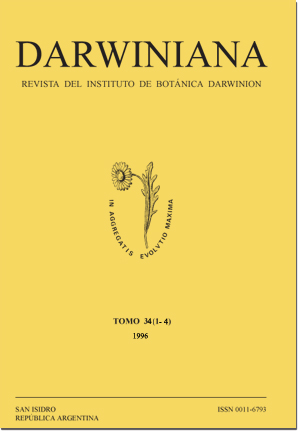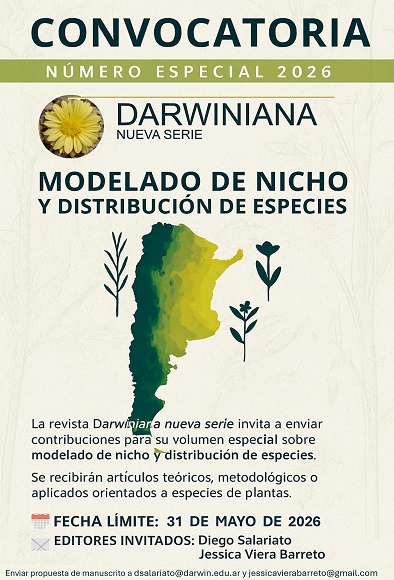ESTUDIOS SOBRE CITOLOGÍA, SISTEMA REPRODUCTIVO y COMPATIBILIDAD POLEN-PISTILO DE PANICUM DICHOTOMIFLORUM y PASPALUM FASCICULATUM (GRAMINEAE: PANICEAE)
DOI:
https://doi.org/10.14522/darwiniana.2014.341-4.409Resumen
VÉASE ABSTRACT EN INGLÉS
Descargas
Publicado
31-12-2011
Cómo citar
Urbani, M. H. (2011). ESTUDIOS SOBRE CITOLOGÍA, SISTEMA REPRODUCTIVO y COMPATIBILIDAD POLEN-PISTILO DE PANICUM DICHOTOMIFLORUM y PASPALUM FASCICULATUM (GRAMINEAE: PANICEAE). Darwiniana, Nueva Serie, 34(1-4), 193–198. https://doi.org/10.14522/darwiniana.2014.341-4.409
Número
Sección
Biología reproductiva
Licencia

A partir de 2012, esta obra está licenciada bajo una Licencia Creative Commons Atribución-NoComercial 2.5 Argentina .
Cualquier obra derivada deberá estar previamente autorizada con nota escrita de los editores.








